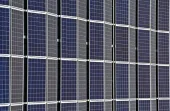
Taiwan's thermal energy reliance to jump to 95% by 2026
Total output will grow 60% as nuclear power will be phased-out.
Taiwan's revised law to phase-out nuclear power by 2025 aligns with our forecast that the share of nuclear power in Taiwan's electricity mix will erode over the coming decade, with thermal gaining share to replace the lost output from nuclear, according to BMI Research. Non-hydro renewables will rise in prominence, but our forecasts remain conservative given the country's track-record of frequent changes to renewables policy.
"In our previous analysis we highlighted that the energy policy of Taiwan's new government under President Tsai Ing-wen will lead to the demise of nuclear power in the Taiwanese power mix over the next decade and this view continues to play out," BMI Research said.
The Lungmen Nuclear Power Plant has been suspended and in September 2016 it was confirmed that the operating licences of Chinshan and Kuosheng nuclear plants would not be extended.
Here's more from BMI Research:
Most recently, it was announced in January 2017 that Taiwan enacted a revised law that calls for a phase-out of nuclear power generation by 2025. This aligns with our forecast that the share of nuclear power in Taiwan's electricity mix will erode over the coming decade, contributing an estimated 18% to the total electricity generation in 2017, before being phased-out entirely by 2025, when the last reactor - Maanshan 2 - goes offline.
Previously, we had not factored in a full phase-out of nuclear power, as we believed the adverse impact of the nuclear phase-out (higher electricity bills being one pertinent example) would led to opposition and delays to the phase-out schedule. However, given the assertive action already taken by the government and the lack of opposition to the revised law, we now expect a full nuclear phase-out to be implemented.
In light of the lessening share of nuclear in Taiwan's power mix, we expect thermal sources - primarily coal and LNG - to grow in importance over the coming decade, with thermal contributing over 95% to total electricity generation by 2026.
This represents growth in total thermal power output by over 60% between 2015 and 2026. The project pipelines for both coal and gas power plants have strengthened notably, and totals a combined 11GW.
The gradual commissioning of these facilities will result in Taiwan's increased reliance on thermal imports, and coal and LNG demand will growth accordingly.
Government support for renewable energy, primarily solar power, will strengthen over the coming years, as Taiwan undertakes the nuclear phase-out and tries to reduce reliance on imported feedstock. This was evidenced in the newly revised law which stated that Taiwan will increase the share of renewables to 20% of total output by 2025, and the government has outlined ambitious expansion targets for the solar sector.
However, the country's track-record of frequent changes to renewables policy and previous failures to meet sector expansion targets informs our relatively conservative renewables sector forecasts at present; we expect non-hydro renewables capacity to total just under 5GW by 2026.
We will wait to see tangible progress in the sector and a strengthening of the project pipeline before we upwardly revise our renewables capacity forecasts.



















 Advertise
Advertise







